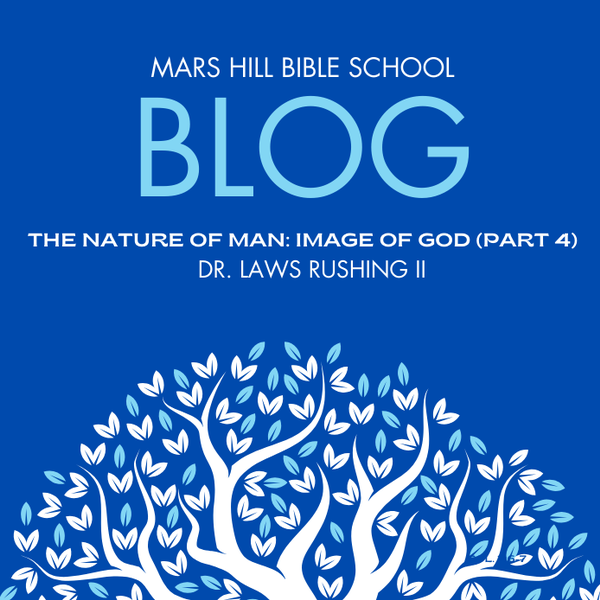MHBS Blog
The Nature of Man: Image of God (Part 4)

Jesus was questioned by the Pharisees and the Herodians about His allegiance to Caesar or the Jewish nation when asked, “Is it lawful to pay taxes to Caesar, or not? Shall we pay, or shall we not pay?” The attempt was to entrap Jesus in an answer that was either disloyal to Rome or unbecoming of Jesus in the Davidic anticipation of Messiah. Jesus ingeniously retorted, “Whose image and inscription is this?” The people responded, “Caesar’s.” Jesus concluded famously, “Render to Caesar the things that are Caesar’s, and to God the things that are God’s.”
The image of Caesar was on the coin, but the image of God is inscribed on the soul. The instilled image of God is a human nature which is spiritual, free, rational, and relational.
The ancients pursued knowledge of the fundamental essences of life. Many conjectured on the classical elements such as fire, water, air, and earth as dominant. Democritus proposed the idea of an atom which was highly intuitive and ingenious, millennia before the microscope. Some proposed a fifth unknown element, a quintessence. What is the quintessence of life? The biologist would point to the cell, the smallest unit of life. The chemist would present a periodic table. A physicist would exclaim that the Hadron Collider has found the building blocks of the universe in evanescent entities known as quarks. But none of these things speak to the soul of man about the quintessence of life.
We desire relationships and belonging with one another. God said, “It is not good for man to be alone.” We were created with the capacities of communication, companionship, and community. Philosopher Martin Buber explored, “When two people relate to each other authentically and humanly, God is the electricity that surges between them.” (Buber 1923)
Christ was asked about the central commandments to the Torah which He summarized in the commandments of love! It is a relationship which is fundamental and focal to life and Christianity. (Matthew 22:37-39) “Jesus said to him, “‘You shall love the Lord your God with all your heart, with all your soul, and with all your mind.’ This is the first and great commandment. And the second is like it: ‘You shall love your neighbor as yourself.”
The phrase “one another” is prominent in the New Testament and appears 100 times and 59 as a command, which directs our attention on the reciprocal quality of life, the aspiration and command of love. (Sterk 2023)
Jesus gives His followers a new commandment, “A new commandment I give to you, that you love one another; as I have loved you, that you also love one another” (John 13:34). Our Lord magnifies the command of love by insisting on his own love as the basis of the command towards one another.
Other “one another” phrases include:
“Be kindly affectionate to one another with brotherly love, in honor giving preference to one another” (Romans 12:10).
“Be of the same mind toward one another” (Romans 12:16).
“Therefore comfort each other and edify one another, just as you also are doing” (I Thessalonians 5:11).
“For you, brethren, have been called to liberty; only do not use liberty as an opportunity for the flesh, but through love serve one another” (Galatians 5:13).
The nature of Humanity reflects the “image of God.” The Genesis narrative summarizes God’s creative actions of human beings as “very good.” God created humanity with the spiritual endowments of soul, freedom, rationality, and relational faculty.


.png)
